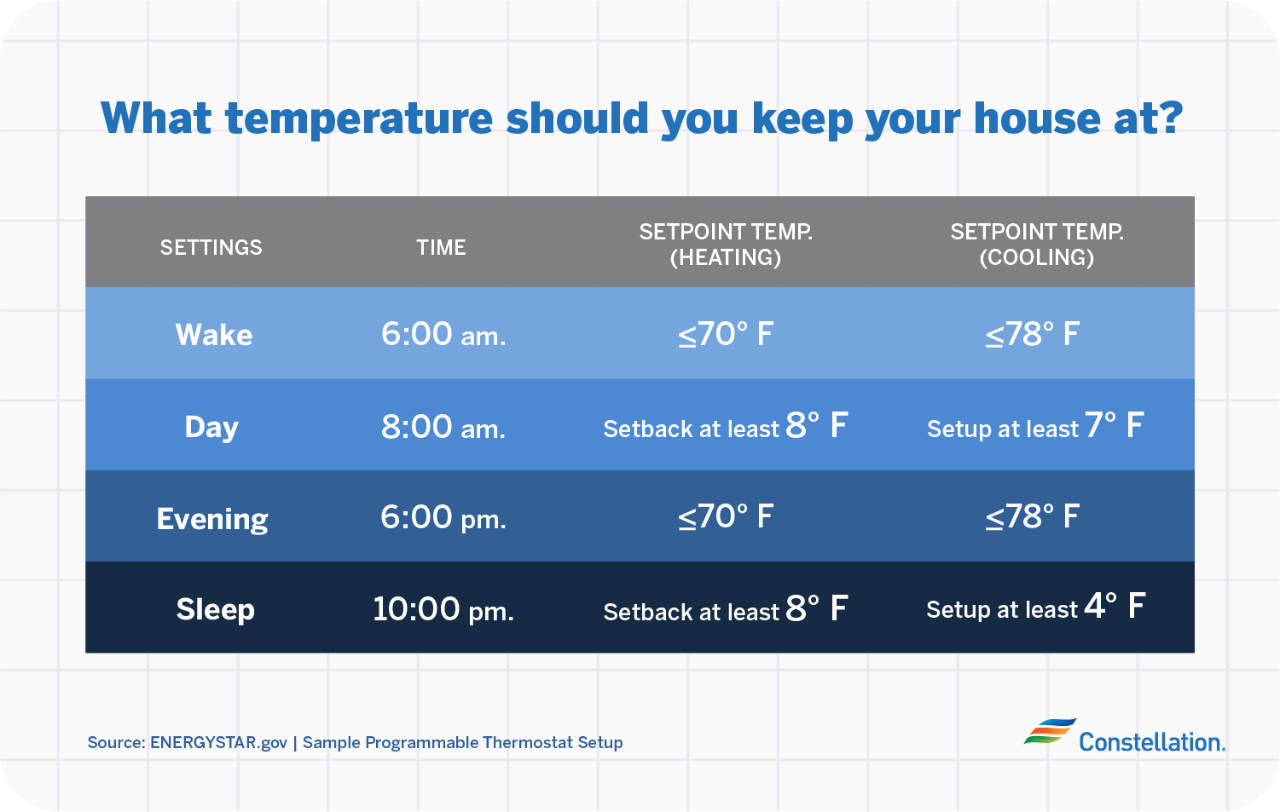
What Temperature Should I Keep My House in the Summer?
As the summer season approaches, maintaining a comfortable temperature inside your home becomes paramount. Excessive heat and humidity can not only lead to discomfort but also pose health risks. Determining the optimal temperature setting for your house during the summer is crucial for creating a comfortable and healthy indoor environment.
Let’s embark on a journey to explore the ideal temperature range for your home in the summer, while also delving into the latest trends and expert insights.
Understanding the Comfort Zone
The comfort zone refers to the temperature range within which most individuals experience thermal neutrality. According to the American Society of Heating, Refrigerating and Air-Conditioning Engineers (ASHRAE), the comfort zone for indoor environments in the summer is between 73°F (23°C) and 79°F (26°C).
Within this range, the body can naturally regulate its temperature through sweating and evaporative cooling. Maintaining a temperature within the comfort zone can provide a comfortable and productive environment for occupants.
Factors Influencing Ideal Temperature
The ideal temperature setting for your house may vary depending on several factors:
- Personal preferences: Different individuals have varying temperature preferences. Some may prefer cooler temperatures, while others may prefer warmer settings.
- Age and health: Infants, the elderly, and individuals with certain medical conditions may require temperatures slightly higher or lower than the standard range.
- Activity level: When engaging in strenuous activities, a cooler temperature may be more comfortable. Conversely, during periods of rest or sleep, a slightly warmer temperature may be preferable.
- Insulation: The insulation level of your home greatly affects the indoor temperature. Well-insulated homes can maintain a more consistent temperature with minimal energy consumption.
- Climate: Homes in regions with extreme summer temperatures may need to be cooled more aggressively to achieve the desired indoor temperature.
Benefits of Maintaining an Optimal Temperature
Keeping your house at an optimal temperature during the summer offers a range of benefits, including:
- Improved comfort: Thermal neutrality promotes a comfortable indoor environment conducive to relaxation, productivity, and sleep.
- Health benefits: Maintaining a moderate temperature can reduce the risk of heat-related illnesses such as heat stroke and heat exhaustion.
- Energy savings: By setting your thermostat slightly higher during the summer, you can reduce energy consumption while still maintaining a comfortable environment.
Tips and Expert Advice
To keep your house at the optimal temperature during the summer, consider these tips and expert advice:
- Use a programmable thermostat: This allows you to set different temperatures for different times of the day, lowering the temperature when you’re away or asleep to save energy.
- Install ceiling fans: Ceiling fans can create a wind chill effect, making the room feel cooler without significantly lowering the thermostat.
- Block out sunlight: Use curtains or blinds to block out sunlight during peak hours of the day, which can help keep the house cooler.
- Open windows at night: When outdoor temperatures are lower than indoor temperatures, open windows to allow cooler air to circulate.
By following these tips, you can create a comfortable and energy-efficient indoor environment during the summer months.
FAQ on Indoor Temperature in Summer
Q: Is it better to have a higher or lower temperature in the summer?
A: The ideal temperature range for summer is between 73°F and 79°F, according to ASHRAE. Within this range, the body can naturally regulate its temperature.
Q: Can setting the thermostat higher save energy?
A: Yes, raising the thermostat by just a few degrees can significantly reduce energy consumption. Every degree higher can save up to 5% on cooling costs.
Q: How can I keep my home cool without using air conditioning?
A: There are several ways to keep your home cool without air conditioning, such as using ceiling fans, blocking out sunlight, opening windows at night, and using natural ventilation.
Q: What are signs that my house is too hot?
A: Common signs of excessive indoor heat include feeling sweaty, uncomfortable, or dehydrated. Heat-related illnesses, such as heat stroke and heat exhaustion, can also occur.
Q: Who is most vulnerable to heat-related illnesses?
A: Infants, the elderly, and individuals with certain medical conditions are more susceptible to heat-related illnesses.
Conclusion
Maintaining an optimal temperature in your house during the summer is crucial for comfort, health, and energy efficiency. By following the tips and expert advice outlined in this article, you can create a comfortable and healthy indoor environment while minimizing energy consumption. Remember, the ideal temperature range for summer is between 73°F and 79°F. Are you ready to beat the heat and enjoy a comfortable summer indoors?

Image: www.constellation.com

Image: www.seashellsandsunflowers.com
What Temperature Should a Vacant House Be Set to in the Summer? [Video … Jul 18, 2022One hot tip is to keep one on the floor so that it pushes cooler air around your home, with another towards an open window (temperature allowing) to push warmer air out. 2. Open windows only when it’s cooler. When the air is cooler, open the windows on all floors to increase ventilation and airflow.